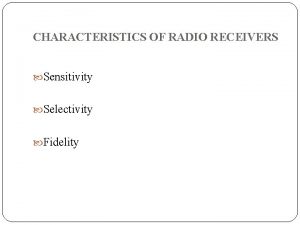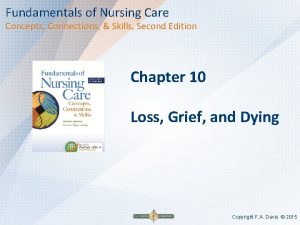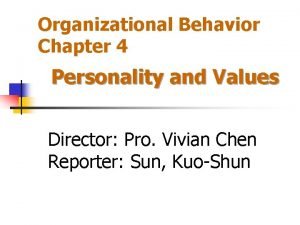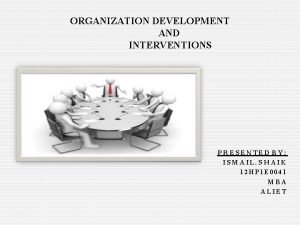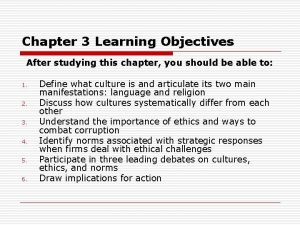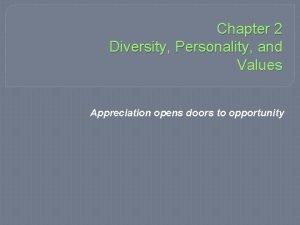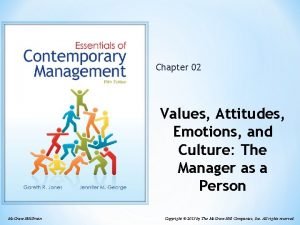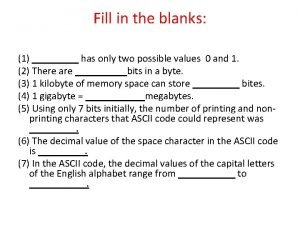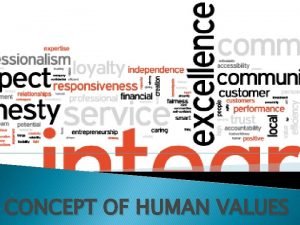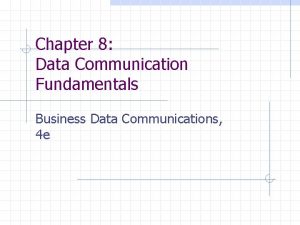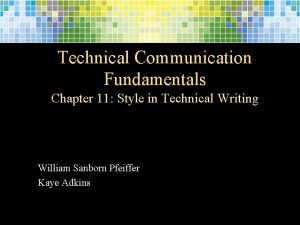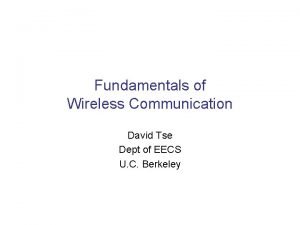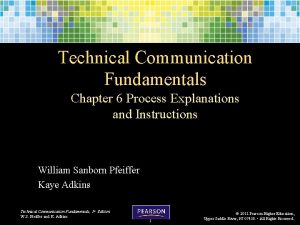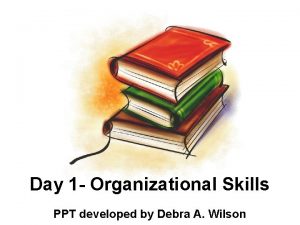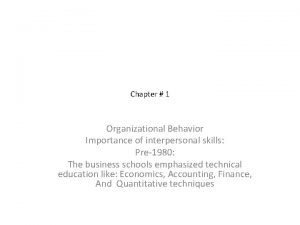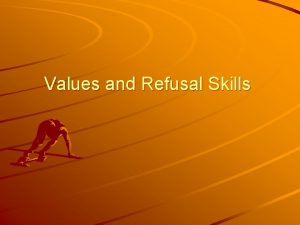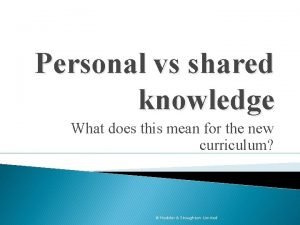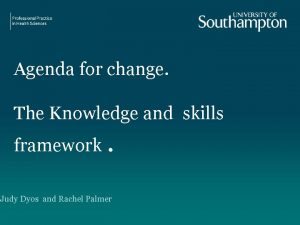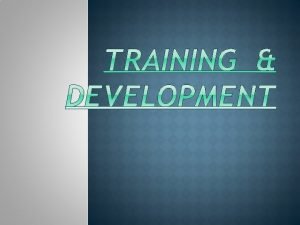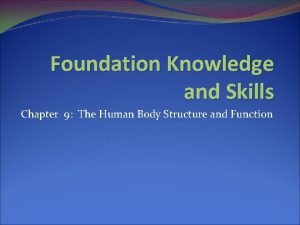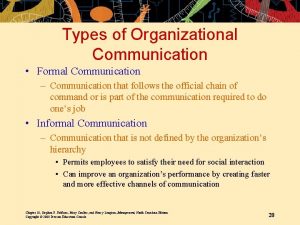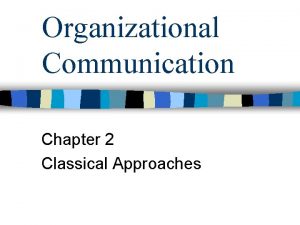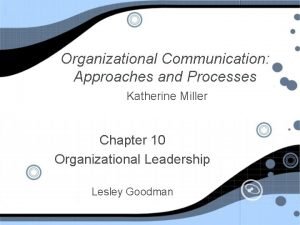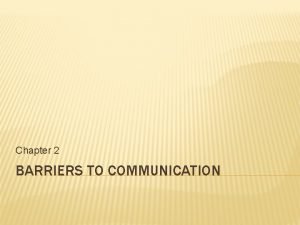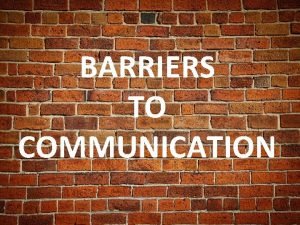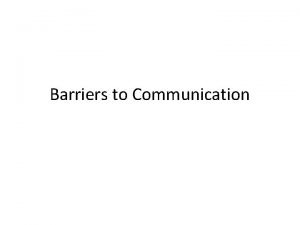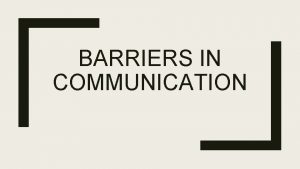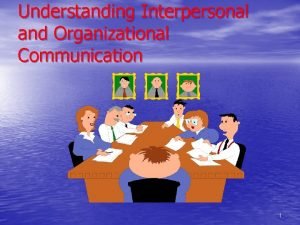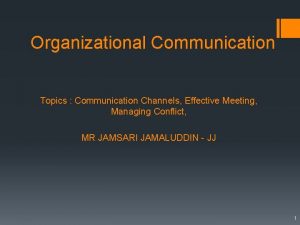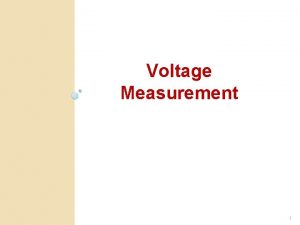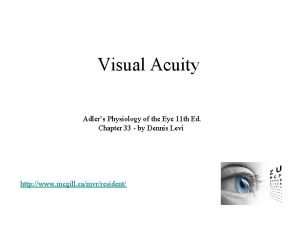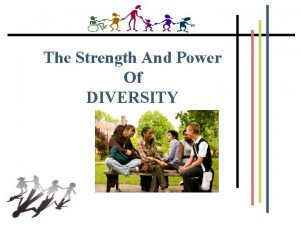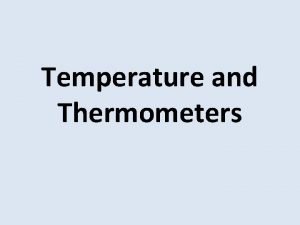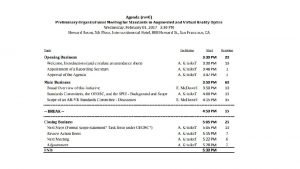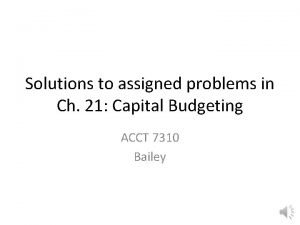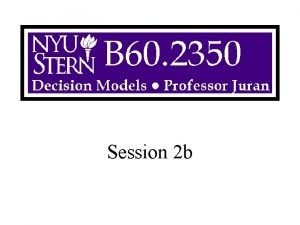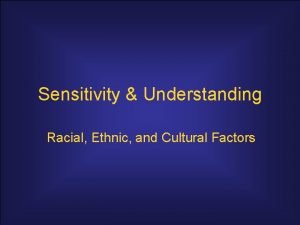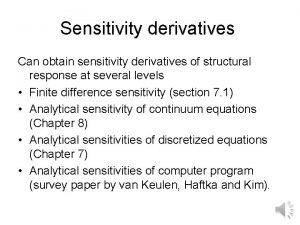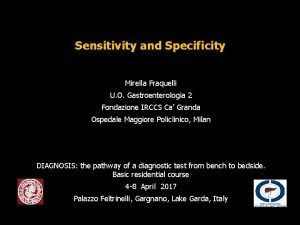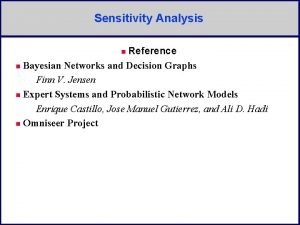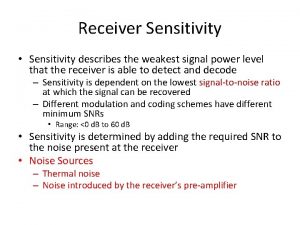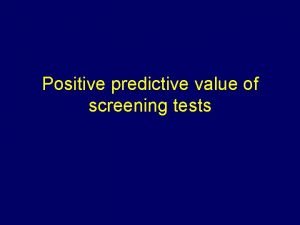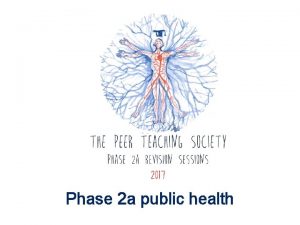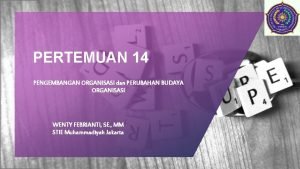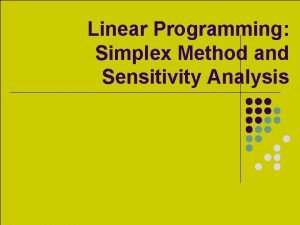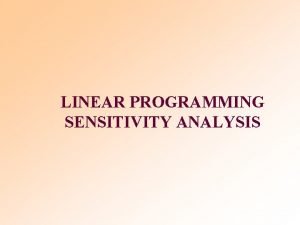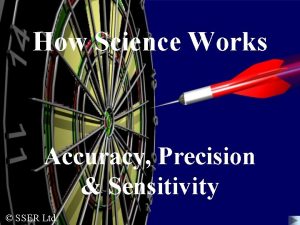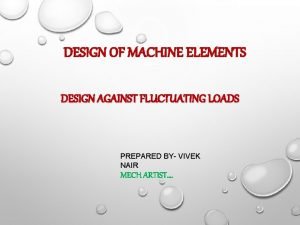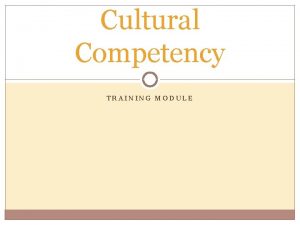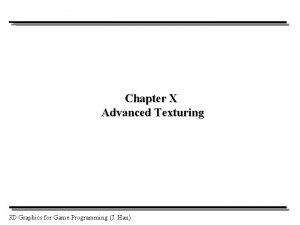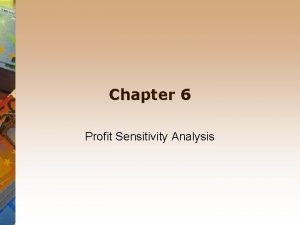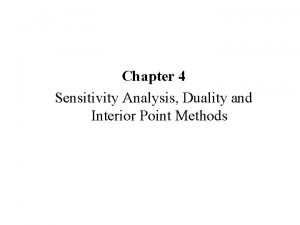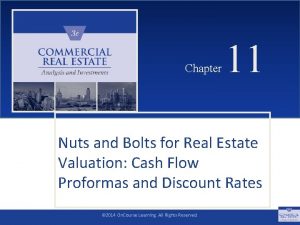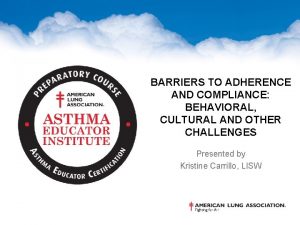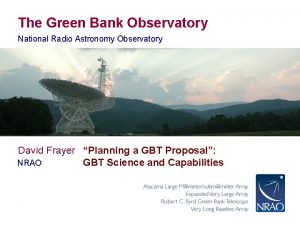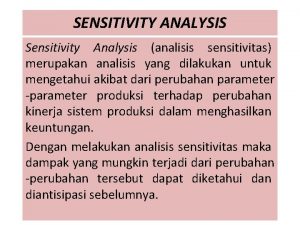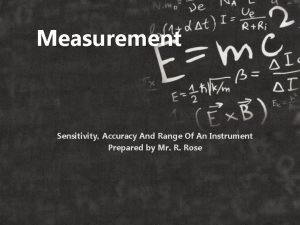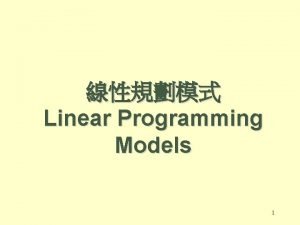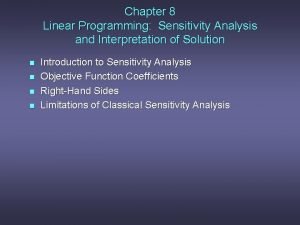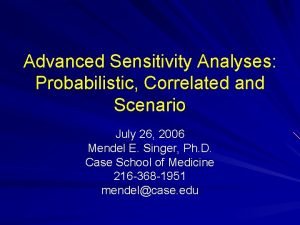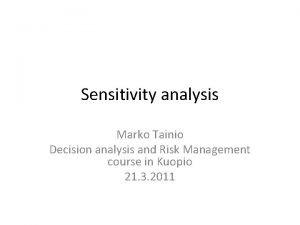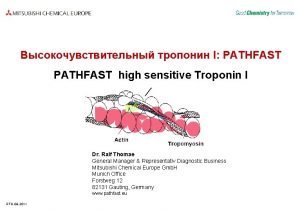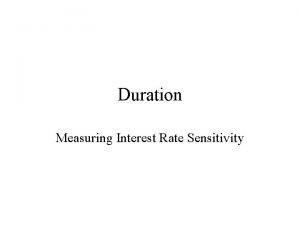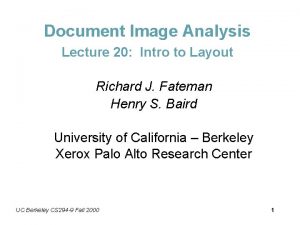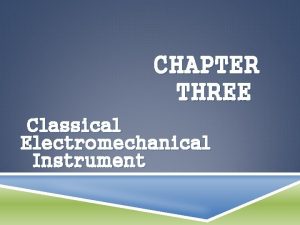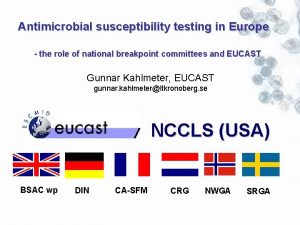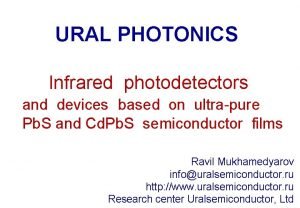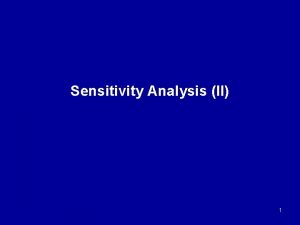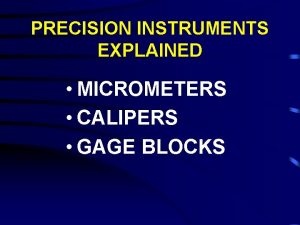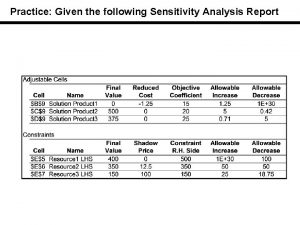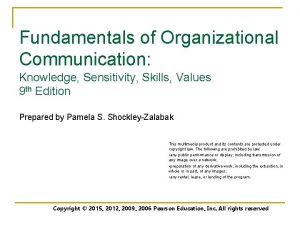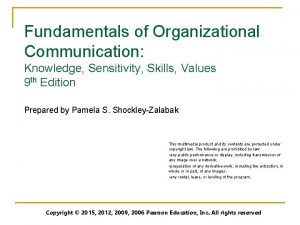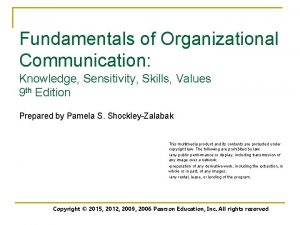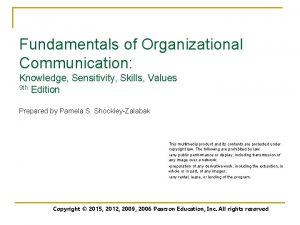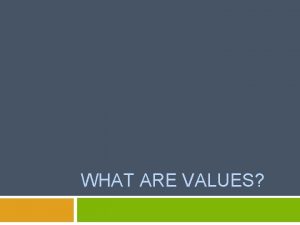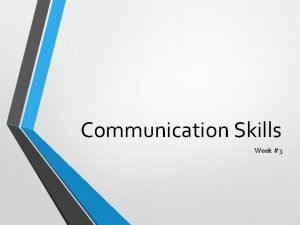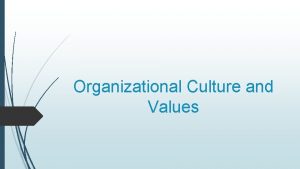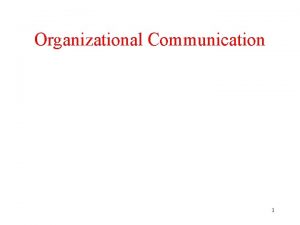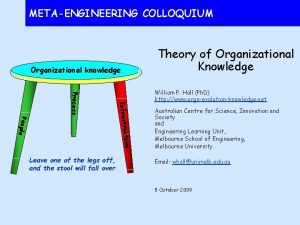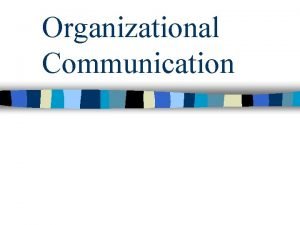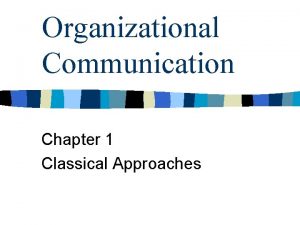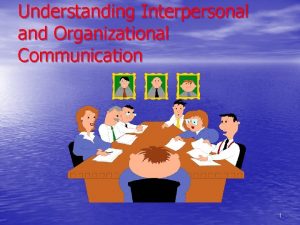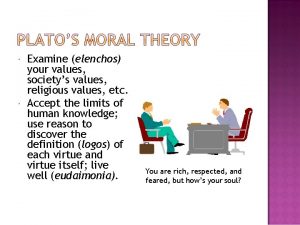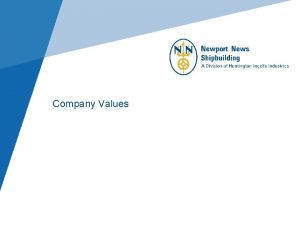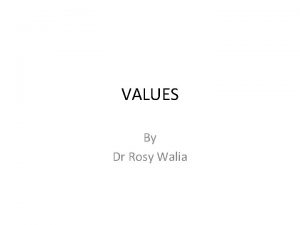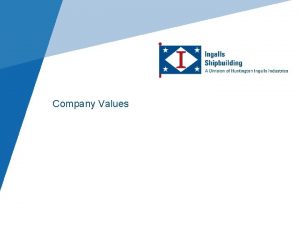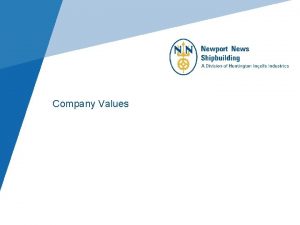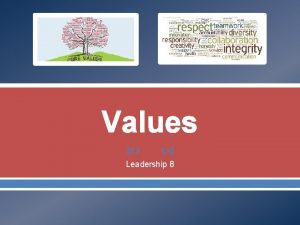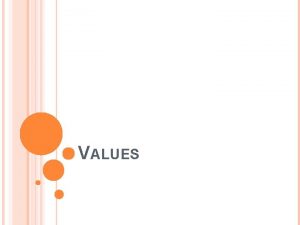Fundamentals of Organizational Communication Knowledge Sensitivity Skills Values
































































































- Slides: 96

Fundamentals of Organizational Communication: Knowledge, Sensitivity, Skills, Values 9 th Edition Prepared by Pamela S. Shockley-Zalabak This multimedia product and its contents are protected under copyright law. The following are prohibited by law: • any public performance or display, including transmission of any image over a network; • preparation of any derivative work, including the extraction, in whole or in part, of any images; • any rental, lease, or lending of the program. Copyright © 2015, 2012, Pearson Education, rights reserved Copyright © 2012, 2009, 2006 Pearson Education, Inc. All rights reserved

Fundamentals of Organizational Communication Theoretical Perspectives for Organizational Communication Chapter Two Prepared by Pamela S. Shockley-Zalabak Copyright © 2012, 2009, 2006 Pearson Education, Inc. All rights reserved Copyright © 2015, 2012, Pearson Education, rights reserved

Objectives n n n Describe the Functional tradition to organizational communication Describe the Meaning-Centered approach to organizational communication Describe Emerging Perspectives for organizational communication Copyright © 2015, 2012, Pearson Education, rights reserved Copyright © 2012, 2009, 2006 Pearson Education, Inc. All rights reserved

Objectives n n Distinguish among Functional, Meaning. Centered, and Emerging Perspectives Understand the importance of meaning generation for organizational communication Copyright © 2015, 2012, Pearson Education, rights reserved Copyright © 2012, 2009, 2006 Pearson Education, Inc. All rights reserved

Objectives n n Identify how organizational communication creates and shapes organizational events Develop analysis abilities using Functional, Meaning-Centered, and Emerging Perspectives Copyright© 2015, 2012, 2009, 2006 Pearson Education, Inc. Allrights reserved Copyright ©© 2012, 2009, 2006 Pearson Education, Inc. All rights reserved

Objectives n n n Practice analysis abilities View communication as the fundamental organizational process Relate organizational communication to a variety of value and ethical issues Copyright © 2015, 2012, Pearson Education, rights reserved Copyright © 2012, 2009, 2006 Pearson Education, Inc. All rights reserved

Key terms n Practical theory - a set of principles enabling communicators to construct tentative models and approaches relevant to broad ranges of practical situations. Copyright © 2015, 2012, Pearson Education, rights reserved Copyright © 2012, 2009, 2006 Pearson Education, Inc. All rights reserved

Key Terms n Functional tradition - way of understanding organizational communication by describing what messages do and how they move through organizations. Copyright © 2015, 2012, Pearson Education, rights reserved Copyright © 2012, 2009, 2006 Pearson Education, Inc. All rights reserved

Functional Tradition ■ Describes… q q How communication produces organizational outcomes Communication as a complex organizational process that serves organizing, relationship, and change functions The way messages move through organizations through examining communication networks, channels, message directions, communication load, and distortion. Communication transmits rules, regulations, and information throughout the organization. Copyright © 2015, 2012, Pearson Education, rights reserved Copyright © 2012, 2009, 2006 Pearson Education, Inc. All rights reserved

Organization Suprasystem Functional Tradition External Environment Copyright © 2015, 2012, Pearson Education, rights reserved Copyright © 2012, 2009, 2006 Pearson Education, Inc. All rights reserved

Key Terms n Organizational communication system number of related units that operate together to create and shape organizational events. Information processing is the primary function of the units. q q What are the main parts of the system? What parts work together to create and shape organizational events? How does communication contribute to keeping a system dynamic? What role did communication play in organizations that cease to exist? Copyright © 2015, 2012, Pearson Education, rights reserved Copyright © 2012, 2009, 2006 Pearson Education, Inc. All rights reserved

Key Terms n Communication inputs - information in the external environment that may influence the decision making of the organization. Copyright © 2015, 2012, Pearson Education, rights reserved Copyright © 2012, 2009, 2006 Pearson Education, Inc. All rights reserved

Key Terms n Communication throughput - transforming and changing of input information for internal organizational use and the generation and transmission of internal information throughout the organization. Copyright © 2015, 2012, Pearson Education, rights reserved Copyright © 2012, 2009, 2006 Pearson Education, Inc. All rights reserved

Key Terms n n Communication output - messages to the external environment from within the organization. Open systems - organizations that continually take in new information, transform that information, and give information back to the environment. Copyright © 2015, 2012, Pearson Education, rights reserved Copyright © 2012, 2009, 2006 Pearson Education, Inc. All rights reserved

How to Create an Open System n n n Listen to customer complaints New advertising and outreach methods New and multiple approaches to solving issues Pay attention to sales or quality problems Leadership is able to effectively work with all departments to solve issues Copyright © 2015, 2012, Pearson Education, rights reserved Copyright © 2012, 2009, 2006 Pearson Education, Inc. All rights reserved

Key Terms n n Closed systems - organizations that lack input communication, making it difficult to make good decisions and stay current with the needs of the environment. Equifinality – potential for the use of a variety of approaches to reach system goals. Copyright © 2015, 2012, Pearson Education, rights reserved Copyright © 2012, 2009, 2006 Pearson Education, Inc. All rights reserved

Key Terms n n Message functions - what communication does or how it contributes to the overall functioning of the organization. Organizing functions - messages that establish the rules and regulations of a particular environment. The adequacy and effectiveness of organizing messages can be evaluated by how well organizational members understand perform tasks, how rules and regulations are understood and followed, and how adequately daily operations support organizational goals. In sum, the organizing function of communication guides, directs, and controls organizational activity. Copyright © 2015, 2012, Pearson Education, rights reserved Copyright © 2012, 2009, 2006 Pearson Education, Inc. All rights reserved

Key Terms n Relationship functions - communication that helps individuals define their roles and assess the compatibility of individual and organizational goals. q The effectiveness of relationship messages is reflected in individual satisfaction with work relationships, productivity, employee turnover, overall support for organizational practices, and a variety of other less obvious ways. Copyright © 2015, 2012, Pearson Education, rights reserved Copyright © 2012, 2009, 2006 Pearson Education, Inc. All rights reserved

Relationship Functions Relationship functions range from informal conversations to visible symbols of status such as large offices and reserved parking spaces, job titles, awards, and promotions are other examples of relationship communication that determine how individuals identify with or relate to the organization Copyright © 2015, 2012, Pearson Education, rights reserved Copyright © 2012, 2009, 2006 Pearson Education, Inc. All rights reserved

Key Terms n Change functions - messages that help organizations adapt what they do and how they do it; viewed as essential to an open system. q The effectiveness of change messages can be determined by whether the organization gathers information from the best available sources and acts on that information with a timely, quality decision. Copyright © 2015, 2012, Pearson Education, rights reserved Copyright © 2012, 2009, 2006 Pearson Education, Inc. All rights reserved

Change Functions n Change messages occur in q q q n Organizational problem solving, Individual decision making, Feedback from the environment Change communication is q q q The processing of new ideas and information The altering of existing procedures and processes Essential for continual adaptation to the environment and for meeting the complex needs of individuals working together Copyright © 2015, 2012, Pearson Education, rights reserved Copyright © 2012, 2009, 2006 Pearson Education, Inc. All rights reserved

Key Terms n Message structure - movement of organizing, relationship, and change messages throughout the organization and between the organization and its external environment. q Asks questions about n Repetitive patterns of interactions among members of the organization (networks), n The use of a variety of channels for communication Message directions The amount of messages and the types of distortions that can be expected to occur in organizational communication. In other words, the structure of organizational communication can be understood in terms of networks, channels, message directions, load, and distortion. n n Copyright © 2015, 2012, Pearson Education, rights reserved Copyright © 2012, 2009, 2006 Pearson Education, Inc. All rights reserved

The Functional Tradition Organizing Messages Rules and regulations Organizational policies Task definition Task instruction Task evaluation Relationship Messages Individual role definition Individual/organizational goals Status symbols Integration among supervisor/employees, peers Change Messages Decision making Market analysis New idea processing Environmental inputs Employee suggestions Problem solving Copyright © 2015, 2012, Pearson Education, rights reserved Copyright © 2012, 2009, 2006 Pearson Education, Inc. All rights reserved

Key Terms n Networks - the formal and informal patterns of communication that link organizational members together. Copyright © 2015, 2012, Pearson Education, rights reserved Copyright © 2012, 2009, 2006 Pearson Education, Inc. All rights reserved

Communication Networks n n n Develop as a result of formal and informal social contact Organization charts that map who reports to whom and in what area of responsibility can be described as blueprints for the way decisions are to be made, the way conflicts are to be resolved, and which groups are responsible for “networking” to reach organizational goals The formal act of organizing creates organizational communication networks or the formal communication system Copyright © 2015, 2012, Pearson Education, rights reserved Copyright © 2012, 2009, 2006 Pearson Education, Inc. All rights reserved

Communication Networks Formal Networks Informal Networks Facilitated by technology Interpersonal relationships that develop between individuals in a work group Interpersonal relationships that develop between individuals and extend beyond the requirements of the work group Copyright © 2015, 2012, Pearson Education, rights reserved Copyright © 2012, 2009, 2006 Pearson Education, Inc. All rights reserved

Key Terms n Channels - means for the transmission of messages. Common means are face-to-face interaction, group meetings, memos, letters, electronic mail systems, computer-assisted data transmission, and teleconferencing. The choice and availability of communication channels influence the way the organization can and does operate Copyright © 2015, 2012, Pearson Education, rights reserved Copyright © 2012, 2009, 2006 Pearson Education, Inc. All rights reserved

Channels n n n n Face to Face Letters Computer Group Meetings Presentations Websites Teleconference Memos Copyright © 2015, 2012, Pearson Education, rights reserved Copyright © 2012, 2009, 2006 Pearson Education, Inc. All rights reserved

Channel Selection n Selecting one channel over another can communicate subtle and important attitudes about both the message receiver and the message itself Research suggests that our attitude about the message and our willingness to have contact with the receiver significantly influence the channels we use for communication Power and status, work requirements, technical capability, and judgments about channel effectiveness all contribute to the mode or modes we use Copyright © 2015, 2012, Pearson Education, rights reserved Copyright © 2012, 2009, 2006 Pearson Education, Inc. All rights reserved

Key Terms n Direction - description of the movement of messages in organizations based on authority or position levels of message senders and receivers; typically described as downward, upward, and horizontal communication Copyright © 2015, 2012, Pearson Education, rights reserved Copyright © 2012, 2009, 2006 Pearson Education, Inc. All rights reserved

Directions n n n Upward - message movement that begins with lower organizational levels and is transmitted to higher levels of authority Downward - message movement that begins with higher organizational levels of authority and is transmitted to lower levels of the organization Horizontal - horizontal communication moves laterally across the organization among individuals of approximately the same level and without distinct reporting relationships to one another. Copyright © 2015, 2012, Pearson Education, rights reserved Copyright © 2012, 2009, 2006 Pearson Education, Inc. All rights reserved

Key Terms n n Load - the volume, rate, and complexity of messages processed by an individual or the organization as a whole Overload – when the volume, rate, and complexity of messages exceed the system’s capacity q q Overload contributes to stress and strains the capacity of individuals to deal with information Technological advances may be causing permanent overload Copyright © 2015, 2012, Pearson Education, rights reserved Copyright © 2012, 2009, 2006 Pearson Education, Inc. All rights reserved

Key Terms n Underload – the volume, rate, and complexity of messages to an individual or organization are lower than the capacity of the individual or system q q Occurs when individuals engage in routine, repetitive tasks that are no longer challenging. Leads to boredom and underutilization of human potential Copyright © 2015, 2012, Pearson Education, rights reserved Copyright © 2012, 2009, 2006 Pearson Education, Inc. All rights reserved

Key Terms Distortion - anything that contributes to alterations in meaning as messages move through the organization Distortino Disotrinot n Tornadoes? Tornitsido Copyright © 2015, 2012, Pearson Education, rights reserved Copyright © 2012, 2009, 2006 Pearson Education, Inc. All rights reserved

Key Terms n Meaning-Centered approach - way of understanding organizational communication by discovering how organizational reality is generated through human interaction. The approach describes organizational communication as the process for generating shared realities that become organizing, decision making, influence, and culture. Copyright © 2015, 2012, Pearson Education, rights reserved Copyright © 2012, 2009, 2006 Pearson Education, Inc. All rights reserved

Key Terms n Meaning-Centered approach - way of understanding organizational communication by discovering how organizational reality is generated through human interaction. The approach describes organizational communication as the process for generating shared realities that become organizing, decision making, influence, and culture. Copyright © 2015, 2012, Pearson Education, rights reserved Copyright © 2012, 2009, 2006 Pearson Education, Inc. All rights reserved

Key Terms n n Organizing - bringing order out of chaos with organizations as the products of the organizing process; described as almost synonymous with the communication process. Decision Making - process of choosing from among numerous alternatives; the part of the organizing process necessary for directing behaviors and resources toward organizational goals. Copyright © 2015, 2012, Pearson Education, rights reserved Copyright © 2012, 2009, 2006 Pearson Education, Inc. All rights reserved

Assumptions of Meaning-Centered Approach 1. All ongoing human interaction is communication in one form or another. 2. Organizations exist through human interaction; structures and technologies result from the information to which individuals react. 3. Shared organizational realities reflect the collective interpretations by organizational members of all organizational activities. 4. Organizing and decision making are essentially communication phenomena. 5. Sensemaking combines action and interpretation FIGURE 2. 2 Key Assumption of the Meaning-Centered Approach Copyright © 2015, 2012, Pearson Education, rights reserved Copyright © 2012, 2009, 2006 Pearson Education, Inc. All rights reserved

Assumptions of Meaning-Centered Approach 6. Identification, socialization, communication rules, and power all are communication processes that reflect how organizational influence occurs. 7. Organizing, decision making, and influence processes describe the cultures of organizations by describing how organizations do things and how they talk about how they do things. 8. Organizational cultures and subcultures reflect the shared realities in the organization and how these realities create and shape organizational events. 9. Communication climate is the subjective, evaluative reaction of organization members to the organization’s communication events, their reaction to organizational culture. FIGURE 2. 2 Key Assumption of the Meaning-Centered Approach Copyright © 2015, 2012, Pearson Education, rights reserved Copyright © 2012, 2009, 2006 Pearson Education, Inc. All rights reserved

Karl Weick (1979) n n n Organizations as such do not exist but rather are in the process of existing through ongoing human interaction. There is no such thing as an organization; there is only the ongoing interaction among human activities. Organizations do not exist outside of human interaction Copyright © 2015, 2012, Pearson Education, rights reserved Copyright © 2012, 2009, 2006 Pearson Education, Inc. All rights reserved

Karl Weick (1979) n n n Focuses on the organizational environment as the communication links and messages that are the basis of human interaction Human reactions “enact” organizational environments through information exchanges and the active creation of meaning This creation or enactment of organizational environments differs among individuals, resulting in multiple and diverse meaning and interpretations Copyright © 2015, 2012, Pearson Education, rights reserved Copyright © 2012, 2009, 2006 Pearson Education, Inc. All rights reserved

Organizational Rules are… n n rules and communication cycles which continually process “equivocal” messages or messages susceptible to varying interpretations relatively stable procedures or known processes that guide organizational behavior used as guidance for most inquiries formed when selective communication cycles are successful, retention occurs and the process is stored as an organizational rule Copyright © 2015, 2012, Pearson Education, rights reserved Copyright © 2012, 2009, 2006 Pearson Education, Inc. All rights reserved

Steps to Making a Decision n n Step 1 - Choosing ways to approach the goal Step 2 - Assigning individual responsibilities within the project Step 3 – Deciding what resources the group will need Decision making is the process of merging each group member’s truths, backgrounds, experiences, abilities, expectations and premises into more general ones that most members of the group can accept Copyright © 2015, 2012, Pearson Education, rights reserved Copyright © 2012, 2009, 2006 Pearson Education, Inc. All rights reserved

Key Terms n n Influence - organizational and individual attempts to persuade; frequently seen in organizational identification, socialization, communication rules, and power. Identity - Relative stable characteristics including core beliefs, values, attitudes, preferences, decisional premises, and more which make up self. Copyright © 2015, 2012, Pearson Education, rights reserved Copyright © 2012, 2009, 2006 Pearson Education, Inc. All rights reserved

Influence n n Creates and changes organizational events Contributing factors to organizing and decision making include… q q q q Who we see as influential Ways people seek to influence others How people respond to influence Identification Socialization Communication rules Power Copyright © 2015, 2012, Pearson Education, rights reserved Copyright © 2012, 2009, 2006 Pearson Education, Inc. All rights reserved

Key Terms n Identification - perception of a sense of belonging usually associated with the belief that individual and organizational goals are compatible. q q q Identification is dynamic Those who identify with the organization are more likely to be positively influenced by and accept the organization’s decisional premises or reasoning If the employee does not feel a sense of control in their work setting, identification will not motivate them to speak up when change is necessary Copyright © 2015, 2012, Pearson Education, rights reserved Copyright © 2012, 2009, 2006 Pearson Education, Inc. All rights reserved

Key Terms n Socialization - active organizational attempts to help members learn appropriate behaviors, norms, and values. q Socialization relates to organizational commitment, decision making, perceptions of communications climate, and overall job satisfaction Copyright © 2015, 2012, Pearson Education, rights reserved Copyright © 2012, 2009, 2006 Pearson Education, Inc. All rights reserved

Key Terms n n Anticipatory socialization - pre-entry information about the organization and anticipated work role. Encounter socialization - early organizational experiences reducing uncertainty about all aspects of organizational life. Copyright © 2015, 2012, Pearson Education, rights reserved Copyright © 2012, 2009, 2006 Pearson Education, Inc. All rights reserved

Key Terms n Metamorphosis socialization - initial mastery of basic skills and information and adjustments to organizational life. Copyright © 2015, 2012, Pearson Education, rights reserved Copyright © 2012, 2009, 2006 Pearson Education, Inc. All rights reserved

Assimilation n n Myers and Oetzel (2003) q Organizational assimilation processes occur across six dimensions: n Familiarity/friendships n Acculturation n Recognition n Involvement n Job competency n Role negotiation Scott and Myers (2010) q A complex membership negotiation [sought via information seeking] along multiple dimensions within organizational social and work systems Copyright © 2015, 2012, Pearson Education, rights reserved Copyright © 2012, 2009, 2006 Pearson Education, Inc. All rights reserved

Key Terms n Communication rules - general prescriptions about appropriate communication behaviors in particular settings. Thematic rules are general prescriptions of behavior reflecting the values and beliefs of the organization, whereas tactical rules prescribe specific behaviors as related to more general themes. Copyright © 2015, 2012, Pearson Education, rights reserved Copyright © 2012, 2009, 2006 Pearson Education, Inc. All rights reserved

Communication Rules… n n …operate to influence behavior …are specific enough to be followed …occur in particular contexts …informal norms about what type of communication is desirable in a particular organization Copyright © 2015, 2012, Pearson Education, rights reserved Copyright © 2012, 2009, 2006 Pearson Education, Inc. All rights reserved

Communication Rules… n Thematic or Tactical q q n Thematic – general prescriptions of behavior reflecting the values and beliefs of the organization Tactical – prescribe specific behaviors as related to more general themes and may evolve from one general thematic rule Compliance with thematic and tactical rules indicates that an individual has received socializing information and identifies with the organization Copyright © 2015, 2012, Pearson Education, rights reserved Copyright © 2012, 2009, 2006 Pearson Education, Inc. All rights reserved

Key Terms n Structuration - production and reproduction of social systems via the application of generative rules and resources in interaction. q Structurational theory – rules not only influence behavior but also are influenced by members’ conceptions of appropriate behaviors q Rules and resources are both the medium and outcome of interaction q Members use rules and resources to maintain or rise in the hierarchy therefore structuration produces the status system(Poole & Mc. Phee 1983) Copyright © 2015, 2012, Pearson Education, rights reserved Copyright © 2012, 2009, 2006 Pearson Education, Inc. All rights reserved

Key Terms n Power - attempts to influence another person’s behavior to produce desired outcomes. The process occurs through communication and is related to resources, dependencies, and alternatives. Copyright © 2015, 2012, Pearson Education, rights reserved Copyright © 2012, 2009, 2006 Pearson Education, Inc. All rights reserved

Power and Resources n Resources – something owned or controlled by an individual, group, or organization. Owning or controlling resources (especially scarce, unique or highly critical resources) allows individuals or organizations to influence interactions with others Copyright © 2015, 2012, Pearson Education, rights reserved Copyright © 2012, 2009, 2006 Pearson Education, Inc. All rights reserved

Power is… n n …not a commodity …an influence process that permits all involved to gain more power, lose more power, or share power. Copyright © 2015, 2012, Pearson Education, rights reserved Copyright © 2012, 2009, 2006 Pearson Education, Inc. All rights reserved

Key Terms n n n Culture - unique sense of the place that organizations generate through ways of doing and ways of communicating about the organization; reflects the shared realities and shared practices in the organization and how they create and shape organizational events. Organizing, decision making, and influence processes, when taken together, help us describe the culture of organizations by describing how organizations do things and how they talk about how they do things Words, actions, artifacts, routine practices, and texts are the regular communication interactions among organizational members that generate uniqueness or culture Copyright © 2015, 2012, Pearson Education, rights reserved Copyright © 2012, 2009, 2006 Pearson Education, Inc. All rights reserved

Metaphors n When culture is used as a metaphor for organizational communication, we attempt to understand communication by understanding q The uniqueness or shared realities q How organizations use language, symbols, jargon and specialized vocabulary q Behaviors, rituals and rites of organizational life q General standards or values of the organization q How communication activities generate uniqueness or symbolic common ground q How cultural information can be manipulated, shared or withheld for personal benefit Copyright © 2015, 2012, Pearson Education, rights reserved Copyright © 2012, 2009, 2006 Pearson Education, Inc. All rights reserved

Key Terms n Communication climate - reaction to the organization’s culture; consists of collective beliefs, expectations, and values regarding communication that are generated as organizational members continually evaluate their interactions with others. Copyright © 2015, 2012, Pearson Education, rights reserved Copyright © 2012, 2009, 2006 Pearson Education, Inc. All rights reserved

21 st Century Emerging Perspectives n n Communication constitutes organizations (CCO) Postmoderism Critical Theory Feminist, race, and class theory Copyright © 2015, 2012, Pearson Education, rights reserved Copyright © 2012, 2009, 2006 Pearson Education, Inc. All rights reserved

Key Terms n Constitutive processes - communication seen as a process of meaning development and social production of perceptions, identities, social structures, and affective responses. Copyright © 2015, 2012, Pearson Education, rights reserved Copyright © 2012, 2009, 2006 Pearson Education, Inc. All rights reserved

Stan Deetz (1992) n n n Communication cannot be reduced to an informational issue where meanings are assumed to be already existing, but must be seen as a process of meaning development and social production of perceptions, identities, social structures, and affective responses. ” move beyond Functional concerns for message production and transfer and the Meaning-Centered issues of “realities” and cultures to a fundamental view of communication that constitutes or brings about self and social environments. Communication is not synonymous with organizing, decision making, and influence but is better understood as the process that literally produces organizing, decision making, and influence. Copyright © 2015, 2012, Pearson Education, rights reserved Copyright © 2012, 2009, 2006 Pearson Education, Inc. All rights reserved

Key Terms n n Communication Constitutes Organization (CCO) Communication processes or flows which generate and sustain organizations through balances between agency and structure. Copyright © 2015, 2012, Pearson Education, rights reserved Copyright © 2012, 2009, 2006 Pearson Education, Inc. All rights reserved

CCO n n n discusses how organizations develop identities, exercise power and influence, and sustain themselves attempts to understand the interactions and balances among agency (communicative actions) and broad structures. addresses how agency and structures are mutually constitutive, that is, how they construct each other. Copyright © 2015, 2012, Pearson Education, rights reserved Copyright © 2012, 2009, 2006 Pearson Education, Inc. All rights reserved

James Taylor and Elizabeth Van Every (2011) “Thirdness” Firstness + Secondness Actions and events of the organization All of the people (agents) engaging in these activities = Thirdness An abstract representation of what an organization is about and how its “authority” influences present and future actions Copyright © 2015, 2012, Pearson Education, rights reserved Copyright © 2012, 2009, 2006 Pearson Education, Inc. All rights reserved

Key Terms n n Postmodernism - theoretical perspectives representing an alienation from the past, skepticism about authority structures, ambiguity of meanings, and mass culture. Postmodern organizational communication seeks to understand how multiple meanings and multiple interpretations of organizational events influence multiple and diverse behaviors. Copyright © 2015, 2012, Pearson Education, rights reserved Copyright © 2012, 2009, 2006 Pearson Education, Inc. All rights reserved

Key Terms n Deconstruction - refers to the examination of taken-for-granted assumptions, the examination of the myths we utilize to explain how things are the way they are, and the uncovering of the interests involved in socially constructed meanings. Copyright © 2015, 2012, Pearson Education, rights reserved Copyright © 2012, 2009, 2006 Pearson Education, Inc. All rights reserved

Key Terms n n n Critical Theory - focuses attention to studies of power and abuses of power through communication and organization. “The central goal of critical theory in organizational communication studies has been to create a society and workplaces that are free from domination and where all members can contribute equally to produce systems that meet human needs and lead to the progressive development of all” (Deetz 2001, p. 26). “One of the principal tenets of the critical studies approach is that organizations are not simply neutral sites of meaning formation; rather, they are produced and reproduced in the context of struggles between competing interest groups and systems of representation” (Mumby 1993, p. 21). Copyright © 2015, 2012, Pearson Education, rights reserved Copyright © 2012, 2009, 2006 Pearson Education, Inc. All rights reserved

Critical Theory Seeks to… n …understand power structures and identify interests served by various types and alignments of power and control. n …uncover power abuses in order to contribute to more fulfilling organizations and entire societies n …support both analysis and action, whether stimulating resistance, promoting change, or focusing on emancipating those abused by power structures Copyright © 2015, 2012, Pearson Education, rights reserved Copyright © 2012, 2009, 2006 Pearson Education, Inc. All rights reserved

Key Terms n n n Hegemony - process of control based on a dominant group leading others to believe their subordination is the norm. Power is hidden from ready observation and accepted as normal if not desirable Certain people in organizations are oppressed even when they do not recognize their experience as such Copyright © 2015, 2012, Pearson Education, rights reserved Copyright © 2012, 2009, 2006 Pearson Education, Inc. All rights reserved

CPomomuwniecartion n n Power is exercised through communication, and power influences communication rules and structures Organizational power controls as domination based on getting people to organize their behavior around particular rule systems. Legitimate control emerges through stories, myths, rituals, and a variety of other symbolic forms. These forms in turn become the rules that prescribe appropriate behavior. This “legitimate” yet hidden exercise of power can contribute to the suspension of critical thinking. (Mumby 1987). Copyright © 2015, 2012, Pearson Education, rights reserved Copyright © 2012, 2009, 2006 Pearson Education, Inc. All rights reserved

Key Terms n Feminist, Race, Class Theories - focus on the marginalization and domination of women and people of color in the workplace and describe how communication of social class influences identity and contributes to privilege and marginalization. These theories focus on valuing of diverse voices in all organizational processes. Copyright © 2015, 2012, Pearson Education, rights reserved Copyright © 2012, 2009, 2006 Pearson Education, Inc. All rights reserved

Key Terms n Feminist Theory - focuses on the marginalization and domination of women in the workplace and the devaluing of women’s voices in all organizational processes. Although diverse in perspective and approaches, feminist theory generally attempts to move our society beyond patriarchal forms and social practices by critiquing power relationships that devalue women Copyright © 2015, 2012, Pearson Education, rights reserved Copyright © 2012, 2009, 2006 Pearson Education, Inc. All rights reserved

Judi Marshall (1993) The Male Principle vs. The Female Principle Self-assertion Separation Independence Control Competition Focused perception Rationality Analysis Clarity Discrimination Activity Interdependence Cooperation Receptivity Merging Acceptance Awareness of patterns Awareness of wholeness Synthesizing Females in organizations adapt to male norms while being evaluated against female stereotypes. “The male domination of cultures goes largely unrecognized in organizational life and in mainstream organizational theory. ” Copyright © 2015, 2012, Pearson Education, rights reserved Copyright © 2012, 2009, 2006 Pearson Education, Inc. All rights reserved

Patrice Buzzanell (1994) Feminist Organizational Communication q q The moral commitment to investigate the subordinated, to focus on gendered interactions in ordinary lives, and to explore the standpoints of women who have been rendered invisible by their absence in theory and research. ” Gender is socially constructed and enacted in organizations, with messages, structures, and practices becoming the contexts for gender construction and negotiation. Organizational communication is therefore the focal process for this construction and negotiation. Copyright © 2015, 2012, Pearson Education, rights reserved Copyright © 2012, 2009, 2006 Pearson Education, Inc. All rights reserved

Karen Ashcraft and Brenda Allen (2003) Racial Bias in Organizations n Not only are organizations fundamentally gendered but also fundamentally raced. n Many of the assumptions in organizations about the contributions of women apply to people of color. n Stereotypical expectations related to race, while differing by race, are evidenced in all types of organizational settings. q q Notions exist which suggest that discrimination and marginalization will be eliminated when more people of color and women are in more diverse organizational positions. To date facts simply do not support this perspective, making gender and race of ongoing concern for individuals as well as organizational excellence. Copyright © 2015, 2012, Pearson Education, rights reserved Copyright © 2012, 2009, 2006 Pearson Education, Inc. All rights reserved

Karen Ashcraft & Brenda Allen (2011), Karen Lucas (2011) Social Class Bias in Organizations n Social class is constructed through communication. Allen (2011) illustrates how occupational differences create class: q q n hourly versus salaried work educational requirements for promotional mobility service versus line responsibilities private office versus open space or no assigned space work locations; and numerous other distinctions. In a specific example of understanding mobility aspirations and social class, Karen Lucas (2011) “…Emotionally charged feelings of dislocation arise when people from blue-collar, working class backgrounds enter the world of white-collar, idle to upper class work. In contrast to all they have gained by upward social mobility, many feel a deep sense of loss. ” (p. 348) Copyright © 2015, 2012, Pearson Education, rights reserved Copyright © 2012, 2009, 2006 Pearson Education, Inc. All rights reserved

Connie Bullis (1993) Feminist Theory Alternative Perspective n Described why it is important to consider how socialization practices can construct women as marginalized others. n Challenged us to think about voices marked as outsiders, unsocialized, uncommitted, disloyal, absentee, unemployable, or dropouts. Copyright © 2015, 2012, Pearson Education, rights reserved Copyright © 2012, 2009, 2006 Pearson Education, Inc. All rights reserved

Key Terms n Race Theory - race perspectives focus on the domination of those not of a majority race and the uncovering of practices which both silence and devalue minority voices Copyright © 2015, 2012, Pearson Education, rights reserved Copyright © 2012, 2009, 2006 Pearson Education, Inc. All rights reserved

Key Terms n Institution(s)- a high prestige organization, process, practice or groupings of similar organizations, providing our environments, relatively stable traditions, practices, standards, customs, rules and laws. q Question: If institutions are more permanent and established than individual organizations, the question becomes: how does an organization or groups of organizations, processes, or practices become institutionalized? Copyright © 2015, 2012, Pearson Education, rights reserved Copyright © 2012, 2009, 2006 Pearson Education, Inc. All rights reserved

Institutionalization n Involves: Innovation, habitualization, objectification, and sedimentation. Organizational communication is fundamental in this description Begins when an innovation or new understanding enters a field of practice, organization, or related group of organizations. Copyright © 2015, 2012, Pearson Education, rights reserved Copyright © 2012, 2009, 2006 Pearson Education, Inc. All rights reserved

Pamela Tolbert and Lynne Zucker (1996), Tim Kuhn (2005) Institutionalization n Habitualization q n Objectification q n In order for the innovation to be sustained, the habitualization phase must occur, whereby the innovation becomes part of patterned approaches to problem solving usually used by a limited set of individuals who have contact with each other across organizations Characterized by social consensus about the value of the innovation, often based on limited knowledge about the specifics of the innovation but agreement that based on convincing arguments of merit the innovation has significant potential. Sedimentation q Characterized by social consensus about the value of the innovation, often based on limited knowledge about the specifics of the innovation but agreement that based on convincing arguments of merit the innovation has significant potential. Copyright © 2015, 2012, Pearson Education, rights reserved Copyright © 2012, 2009, 2006 Pearson Education, Inc. All rights reserved

Lammers and Barbour Institutions n n …bring us observable routines that go across many settings or organizations …manifest beliefs, which influence decisions and choices that individuals make …are established through associations among people and are characterized by low rates of change with fixed and enduring qualities, often formalized with specific rules for conduct and specific prescriptions for rational purpose and how to get things done …influence concepts of professions and professional identity Copyright © 2015, 2012, Pearson Education, rights reserved Copyright © 2012, 2009, 2006 Pearson Education, Inc. All rights reserved

Key Terms n Global cultures – regional or country-specific societal values and practices including core dimensions such as uncertainty avoidance, power distance, institutional collectivism, ingroup collectivism, gender egalitarianism, assertiveness, future orientation, performance orientation, and humane orientation. Copyright © 2015, 2012, Pearson Education, rights reserved Copyright © 2012, 2009, 2006 Pearson Education, Inc. All rights reserved

House, Hanges, Javidan, Dorfman, Gupta (2004) Participants were asked to describe varying values and practices related to functioning in a world of global collaborations q 10 year study q 62 societies q 170 social scientists and management scholars from around the world q 17, 300 participants q 951 organizations q Conclusion: 9 core dimensions of global cultures Copyright © 2015, 2012, Pearson Education, rights reserved Copyright © 2012, 2009, 2006 Pearson Education, Inc. All rights reserved

9 Core Dimensions of Global Cultures n n n n n Uncertainty avoidance Power distance Institutional collectivism In-group collectivism Gender Egalitarianism Assertiveness Future Orientation Performance Orientation Humane Orientation Copyright © 2015, 2012, Pearson Education, rights reserved Copyright © 2012, 2009, 2006 Pearson Education, Inc. All rights reserved

Technology and Organizational Communication Emerging communications technologies influence n n n Organizational structure Processing of information Newcomer socialization Interactions among work groups Interactions with customers The speed of work Information security Individual privacy Networks for innovation Problem solving Decision making A host of other organizational experiences. Copyright © 2015, 2012, Pearson Education, rights reserved Copyright © 2012, 2009, 2006 Pearson Education, Inc. All rights reserved

Technology and Organizational Communication n Access to and control of technology are powerful communication influences changing the way work is performed, how people relate to each other, how power is exercised, and a host of organizational participation practices. n It is important to understand that the emergence of these technologies changes fundamental assumptions in all of theoretical perspectives we discussed Copyright © 2015, 2012, Pearson Education, rights reserved Copyright © 2012, 2009, 2006 Pearson Education, Inc. All rights reserved

Discussion Question #1 n Which of the three approaches (Functional, Meaning-Centered, or Emerging Perspectives) to organizational communication do you think better describes organizations? Why? Copyright © 2015, 2012, Pearson Education, rights reserved Copyright © 2012, 2009, 2006 Pearson Education, Inc. All rights reserved

Discussion Question #2 n Describe a circumstance you have observed when organizational communication influenced effectiveness. Copyright © 2015, 2012, Pearson Education, rights reserved Copyright © 2012, 2009, 2006 Pearson Education, Inc. All rights reserved

Discussion Question #3 n Describe an organization that you know well. Identify message functions and the structure of that organization. Copyright © 2015, 2012, Pearson Education, rights reserved Copyright © 2012, 2009, 2006 Pearson Education, Inc. All rights reserved

Discussion Question #4 n Describe the culture of the same organization. Copyright © 2015, 2012, Pearson Education, rights reserved Copyright © 2012, 2009, 2006 Pearson Education, Inc. All rights reserved

Discussion Question #5 n Debate whether or not we should view communication as the fundamental organizational process. Copyright © 2015, 2012, Pearson Education, rights reserved Copyright © 2012, 2009, 2006 Pearson Education, Inc. All rights reserved

The Functional Tradition 1. How effective are organizing, relationship, and change messages? 2. What types of formal and informal communication networks exist? What network roles can you identify? Are they adequate? 3. Is channel use appropriate for effective communication? 4. Is the load on the communication system part of the problem? 5. What types of communication distortion exist? 6. Does the organization get good input communication from its environment? How effective is throughput and output communication? Is the system open or closed? The Meaning-Centered Approach 1. 2. 3. 4. 5. 6. 7. 8. Do organizing activities help reduce message equivocality? How effective is decision-making communication? Do most organizational members identify with the organization? How do you know? What attempts are made at organizational socialization? Are they appropriate and effective? How does power relate to the problem? Do organizational stories, rituals, and events provide important information? What type of culture exists? Is it effective? How do you know? How can the communication climate be characterized? Is that appropriate? What should change? Copyright © 2015, 2012, Pearson Education, rights reserved Copyright © 2012, 2009, 2006 Pearson Education, Inc. All rights reserved

Emerging Perspectives 1. Describe how communication constitutes an organization. 2. What are the hidden power relationships? 3. Are women and people of color marginalized? 4. How are social classes represented? 5. Describe abuses of power 6. Do stories, rituals, and events sustain hierarchical and patriarchal systems? 7. Is decision making characterized by domination or codetermination? How can change occur? 8. How is rationality conceptualized and presented? 9. How do institutions influence particular organizations? 10. How do global cultural differences influence organizational collaborations? 11. Describe how technology influences issues of power, marginalization, culture, and participation in decision making Figure 2. 3 Analyzing Organizational Problems Copyright © 2015, 2012, Pearson Education, rights reserved Copyright © 2012, 2009, 2006 Pearson Education, Inc. All rights reserved
 Fundamentals of organizational communication 9th edition
Fundamentals of organizational communication 9th edition Fundamentals of organizational communication 9th edition
Fundamentals of organizational communication 9th edition Selectivity
Selectivity Fundamentals of nursing care concepts connections & skills
Fundamentals of nursing care concepts connections & skills Organizational behavior chapter 4
Organizational behavior chapter 4 Organizational development definition
Organizational development definition Western vs eastern values
Western vs eastern values Terminal values and instrumental values
Terminal values and instrumental values An individual's enduring tendency to feel
An individual's enduring tendency to feel What are the two possible values a bit can have
What are the two possible values a bit can have Human values definition
Human values definition The knowledge language values customs and material objects
The knowledge language values customs and material objects Fundamentals of data communication
Fundamentals of data communication Fundamentals of technical communication
Fundamentals of technical communication Fundamentals of wireless communication solution
Fundamentals of wireless communication solution Technical communication fundamentals
Technical communication fundamentals Organizational skills ppt
Organizational skills ppt Interpersonal skills in organizational behavior
Interpersonal skills in organizational behavior Refusal skills worksheet
Refusal skills worksheet What is shared knowledge
What is shared knowledge Knowledge shared is knowledge squared
Knowledge shared is knowledge squared Knowledge shared is knowledge multiplied interpretation
Knowledge shared is knowledge multiplied interpretation Knowledge creation and knowledge architecture
Knowledge creation and knowledge architecture Contoh shallow knowledge dan deep knowledge
Contoh shallow knowledge dan deep knowledge A priori vs a posteriori
A priori vs a posteriori Book smarts definition
Book smarts definition Shared knowledge vs personal knowledge
Shared knowledge vs personal knowledge Gertler econ
Gertler econ Ska skills knowledge attitude
Ska skills knowledge attitude Public health skills and knowledge framework
Public health skills and knowledge framework Ksf core dimensions
Ksf core dimensions New knowledge attitudes and skills acquired in ojt
New knowledge attitudes and skills acquired in ojt Knowledge vs skills
Knowledge vs skills Foundation knowledge and skills
Foundation knowledge and skills Foundation knowledge and skills
Foundation knowledge and skills Examples of intrapersonal skills
Examples of intrapersonal skills What are hard skills and soft skills
What are hard skills and soft skills Skills passport
Skills passport Formal communication
Formal communication Modern theories of organizational communication
Modern theories of organizational communication Organizational communication katherine miller
Organizational communication katherine miller Wrong assumptions in communication
Wrong assumptions in communication Strategies to overcome communication barriers
Strategies to overcome communication barriers What are the organizational barriers to communication
What are the organizational barriers to communication Gender barriers of communication
Gender barriers of communication Interpersonal and organizational communication
Interpersonal and organizational communication Organizational communication topics
Organizational communication topics Characteristics of organizational communication
Characteristics of organizational communication Informal communication examples
Informal communication examples Grapevine communication
Grapevine communication Multiplier resistor voltmeter
Multiplier resistor voltmeter Minimum recognizable acuity
Minimum recognizable acuity Cultural sensitivity definition
Cultural sensitivity definition Sensitivity equation
Sensitivity equation Sensitivity thermometer
Sensitivity thermometer Stain index
Stain index Pelli robson chart
Pelli robson chart Dcf sensitivity analysis
Dcf sensitivity analysis Decision models
Decision models Cultural sensitivity definition
Cultural sensitivity definition Sensitivity formula
Sensitivity formula Sensitivity specificity mnemonic
Sensitivity specificity mnemonic Sensitivity analysis bayesian network
Sensitivity analysis bayesian network Receiver sensitivity calculation
Receiver sensitivity calculation Ppv vs sensitivity
Ppv vs sensitivity Sensitivity specificity ppv npv
Sensitivity specificity ppv npv Contoh unilateral power
Contoh unilateral power Sensitivity analysis in simplex method
Sensitivity analysis in simplex method Solver shadow price
Solver shadow price Storyline online
Storyline online Sensitivity accuracy precision
Sensitivity accuracy precision Glulysine
Glulysine Notch sensitivity formula
Notch sensitivity formula Why is culture identity important
Why is culture identity important Radiosity normal mapping
Radiosity normal mapping Profit sensitivity analysis
Profit sensitivity analysis Sensitivity analysis and duality
Sensitivity analysis and duality Cap rate sensitivity analysis
Cap rate sensitivity analysis Cultural sensitivity definition
Cultural sensitivity definition Gbt sensitivity calculator
Gbt sensitivity calculator Apa itu sensitivity
Apa itu sensitivity Sensitivity of instrument
Sensitivity of instrument Excel shadow price
Excel shadow price What is shadow price in sensitivity analysis
What is shadow price in sensitivity analysis Advanced sensitivity analysis
Advanced sensitivity analysis Marko tainio
Marko tainio Sensitivity analysis lecture notes
Sensitivity analysis lecture notes Troponin meaning
Troponin meaning Interest rate risk sensitivity analysis
Interest rate risk sensitivity analysis Noise sensitivity
Noise sensitivity Megohm sensitivity of galvanometer formula
Megohm sensitivity of galvanometer formula Antifungal sensitivity test
Antifungal sensitivity test Spectral sensitivity
Spectral sensitivity Sensitivity report analysis
Sensitivity report analysis What is the greatest sensitivity of most calipers
What is the greatest sensitivity of most calipers Sensitivity analysis
Sensitivity analysis Gravity sensitivity firenze
Gravity sensitivity firenze


